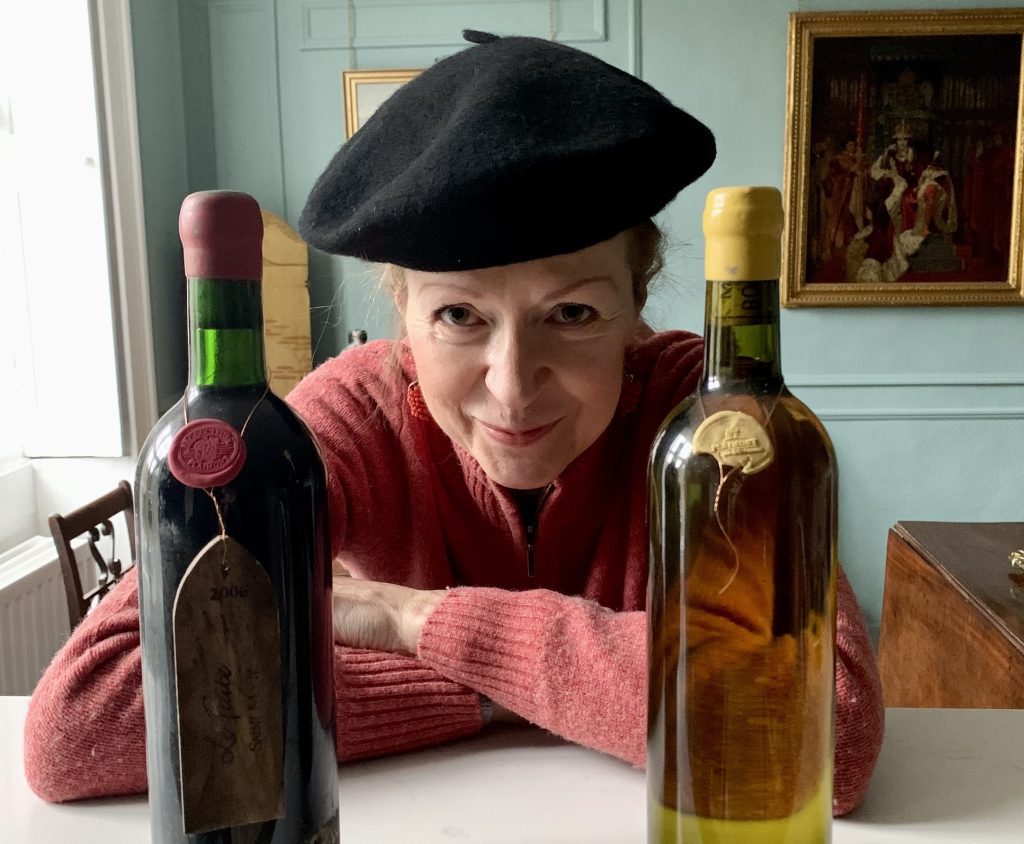Joanna Simon is a prolific wine writer and editor, whose career includes 22 years as wine critic for The Sunday Times, authoring several wine books and serving editor of various food and drinks magazines. In our Meet the Member interview, she tells Amanda Barnes why she is surprised Riesling remains niche in the UK and talks about the irresistible appeal of photography.
What is your first memory in wine?
I remember my grandfather bringing bottles of Blue Nun and something labelled Saint-Emilion at Christmas. I was probably about eight and was drawn to the Blue Nun label. I don’t remember anything about the Saint Emilion. It might well have been a generic bottling, rather than something fancier from a château.
You have been writing about wine for the UK market and consumers for over 30 years. Are there any wine trends that have really surprised you in that time? Or, indeed, are you surprised that any wine regions or varieties haven’t become as popular as expected?
In fact, I’ve been writing about wine for 40 years! Considering how Cabernet Sauvignon and Chardonnay held sway at the beginning – “the chocolate and vanilla of the wine world,” as the late Len Evans called them – I was surprised how quickly more obscure grape varieties and regions seemed to get a toehold (a little toe), everything from Petit Manseng, Marcillac and Frappato to orange wine. I’m also pleased to see how alternative packaging has taken off.
On the minus side, I would have thought by now that Riesling in the UK would have shaken off the Liebfraumilch legacy that has tarred it since the 1980s (completely unfairly as Liebfraumilch had very little to do with Riesling), but dry Riesling is still more niche than it deserves to be – and it’s such a good food wine.
What are the wine regions that are closest to your heart, and why?
Wines from Southwest France because I love the region and love the way the wines are made from grape varieties hardly seen anywhere else; Italian wines, for the same reasons and also because they’re often very good food wines; red Burgundy because I love Pinot Noir; southern Rhônes because they’re such soothingly generous, warm-hearted wines; vintage Champagne (does it need a reason?); anything from old vines because they seem to carry their years in their layers of flavour and texture.
You split your time between homes in Kent and Southwest France. What are your ‘go-to’ wines while residing in France?
I’d like them to be Cahors (I’m just outside the region) and Saint Mont blanc or Jurançon Sec. In reality, they tend to be a hotch potch of things I pick up locally (a Plan de Dieu, say), samples that I’ve got to taste and older wines that I’ve taken from my UK cellar.
You are also a keen photographer. Compared to wine writing, how do you feel the camera allows you to capture a different element of the wine world?
You can catch a moment in time that would be hard to convey in a few words. A picture I took of Aubert de Villaine of Domaine de la Romanée Conti when I was chatting to him in London early in 2020 has been one of my most popular Instagram posts. It said so much more than words.
And recently, at Château Galoupet in Provence, I took a photo of bottles of brightly coloured part-fermented juices with dishes of the corresponding grapes in front of them on a sun-dappled terrace. Again, it would have been hard to give it the same immediacy and appeal.
Do you have any favourite subjects to shoot?
Insects and other fauna and flora, but that’s another story. In terms of wine, it’s not what I do most of, which is bottles! I like taking photos of vines, especially close up. A perfect vine leaf and gnarled old trunks are beautiful things.
As summer draws to a close, what are you most looking forward to in the coming winter months?
Eating game and more mushrooms – truffles, too, if I’m lucky – and drinking them with northern Rhônes and like-minded Syrahs, red Burgundy and Pinot Noirs, and Nebbiolo. Going for long walks then sinking into a chair with a good book.

